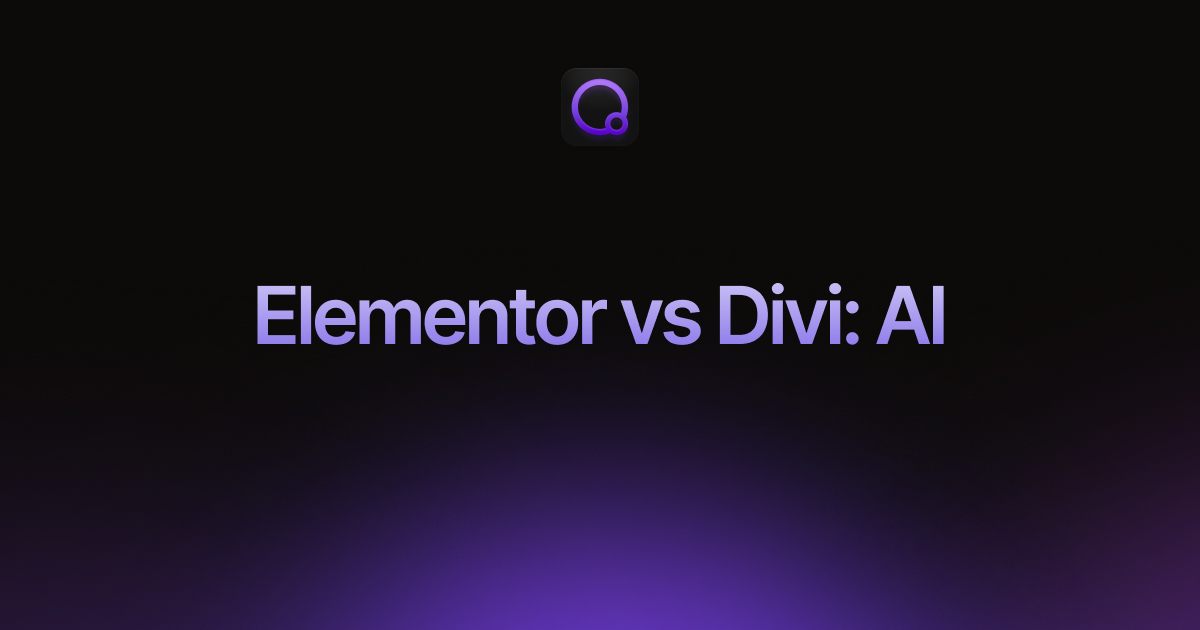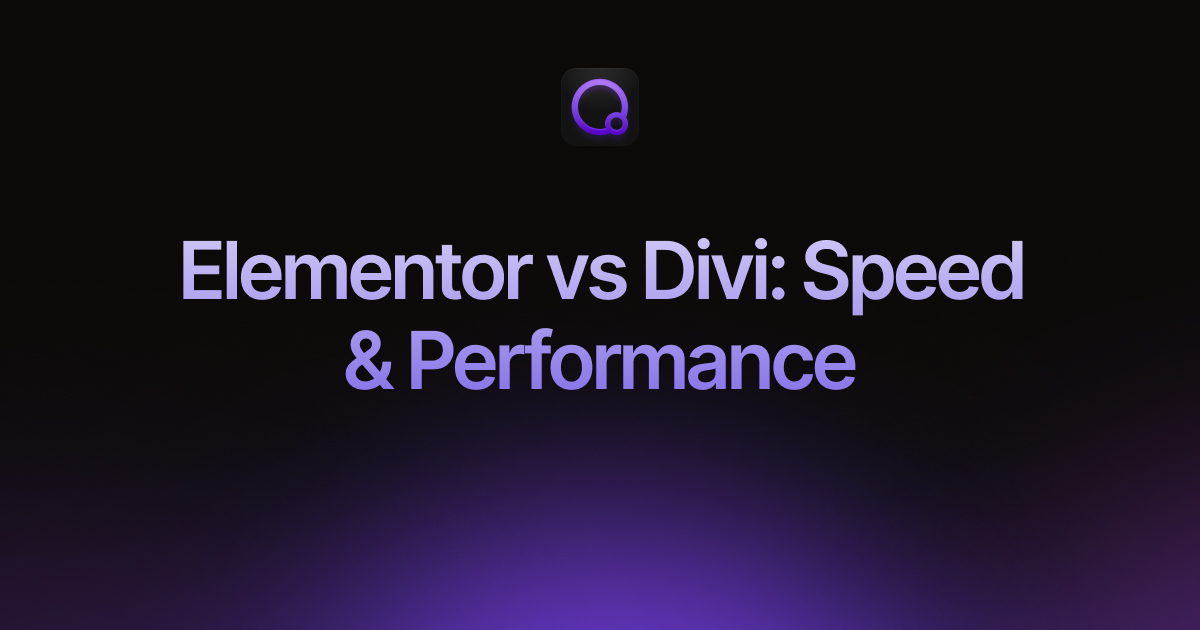Elementor vs Divi: Unique Features
When you’re looking to create professional WordPress websites, Elementor and Divi are two of the most trusted solutions available today. Both builders let you design stunning sites without coding knowledge.
However, beneath their shared commitment to user-friendly design lies a collection of unique features that each offers exclusively.
In this article, we’ll explore these features to help you decide which builder offers the most specialized capabilities required for your project.
Design Control: Elementor vs Divi Unique Features
When building a professional site, effective design control lets you maintain consistency across all pages. Let’s see how each builder approaches this challenge with their unique solutions.
Elementor’s Design Control Features
Elementor provides several features that give you complete control over your website’s visual consistency and design management. Some of these features include:
1. Site-Wide Style Management
Keeping your website’s look consistent can be a headache. Elementor addresses this with Global Site Settings, easily accessible from the Top Toolbar. This centralized approach lets you create universal design standards for typography, color schemes, button styles, form elements, and other elements from a single panel.
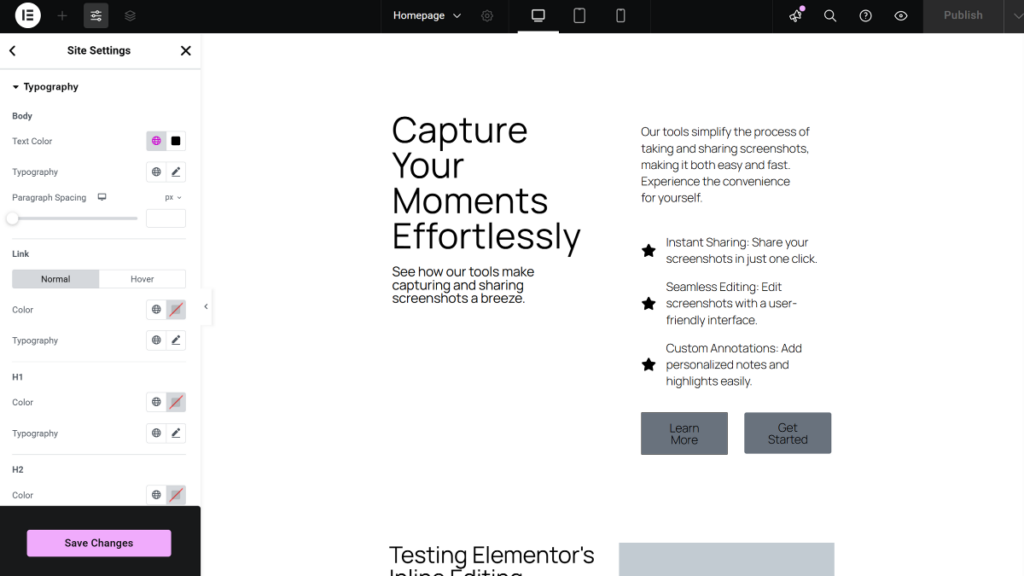
Once you set these styles, they’re available to apply to widgets used throughout your website. If you need to make a change, you simply update it in the Site Settings, and it will reflect everywhere on your site that uses those global settings.
2. Cross-Site Copy and Paste
If you build multiple sites, you’ll appreciate how easy Elementor makes it to reuse designs. Rather than relying on template imports and exports, Elementor’s Copy & Paste Between Sites feature simplifies this with just a single click.
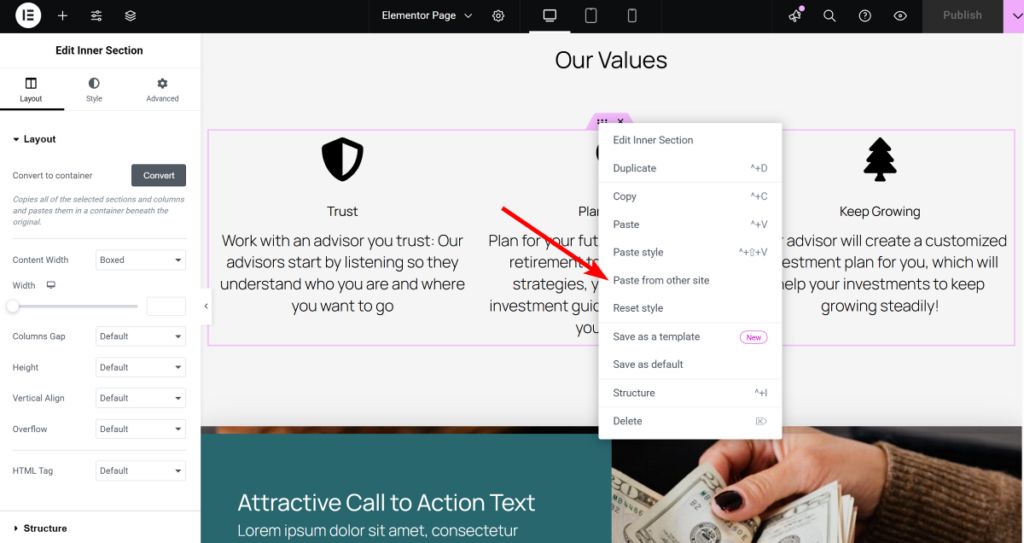
The process is simple: right-click any section in your editor and select the copy option. Then, navigate to another site that also has Elementor installed and open the page where you’d like to paste the section. Right-click in the Canvas area and choose the “Paste from other site” option. This transfers the complete structure with all widgets and styles intact.
Divi’s Design Control Features
Divi approaches design control with features focused on efficiency and systematic style management across your website. It includes features such as:
1. Module Design Presets
Divi’s Module Presets system allows you to create and save custom styling configurations for any module or section. Once saved, these presets can be applied to other instances with a single click, ensuring design consistency across your site.

The real power of this feature becomes evident when you want to update the design. If you update the preset in one place, all modules using that preset are automatically updated, maintaining consistency without manual adjustments to each element.
This feature provides an effective way to standardize your design approach while maintaining flexibility for customization.
2. Replace and Extend Styles
Divi also includes powerful time-saving features like Find & Replace Styles and Extend Styles.
Instead of manually updating each element, Find & Replace allows you to locate all instances of specific design settings (such as a particular color or font size) on a page and replace them with a new choice.
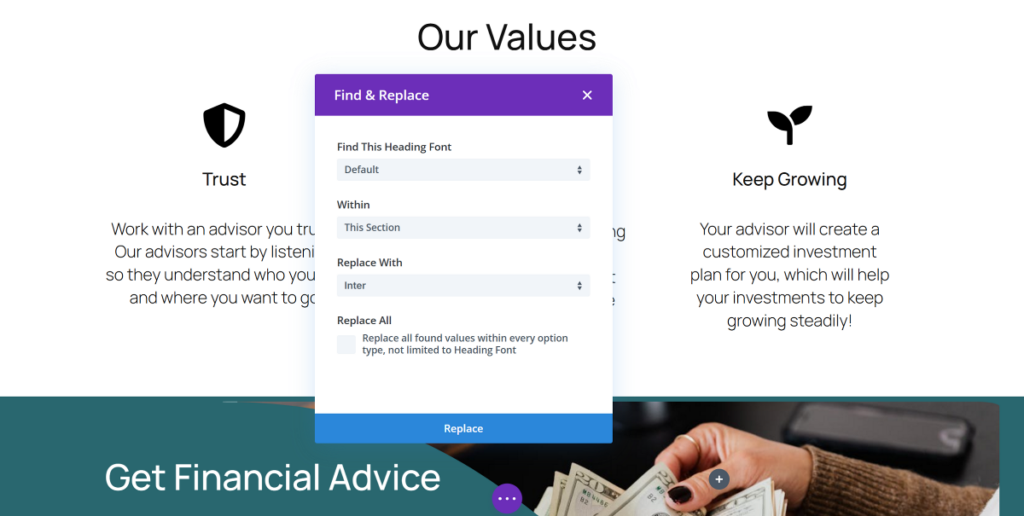
To do this, simply right-click the design option inside the module settings and choose “Find & Replace.”
Extend Styles works similarly, letting you take a specific style setting from one module (like a margin value or a border style) and apply it to all modules of the same type on the page, or to all modules within a specific section.

Workflow Efficiency: Elementor vs Divi Unique Features
Apart from design controls, both builders also include unique features that streamline your workflow and make your building process smoother.
Let’s look at how each builder enhances workflow efficiency.
Elementor’s Workflow Features
Elementor includes a specialized feature that enhances collaboration and streamlines the design process.
Design Notes
When you’re working on a website with clients or as part of a team, collaboration and feedback become important. Clear communication helps keep your workflow smooth and prevents endless rounds of revisions.
Elementor addresses this challenge with its built-in Notes feature. This feature lets you add comments and annotations directly onto page elements within the editor interface. You’ll see immediate benefits in how your team communicates about design changes.
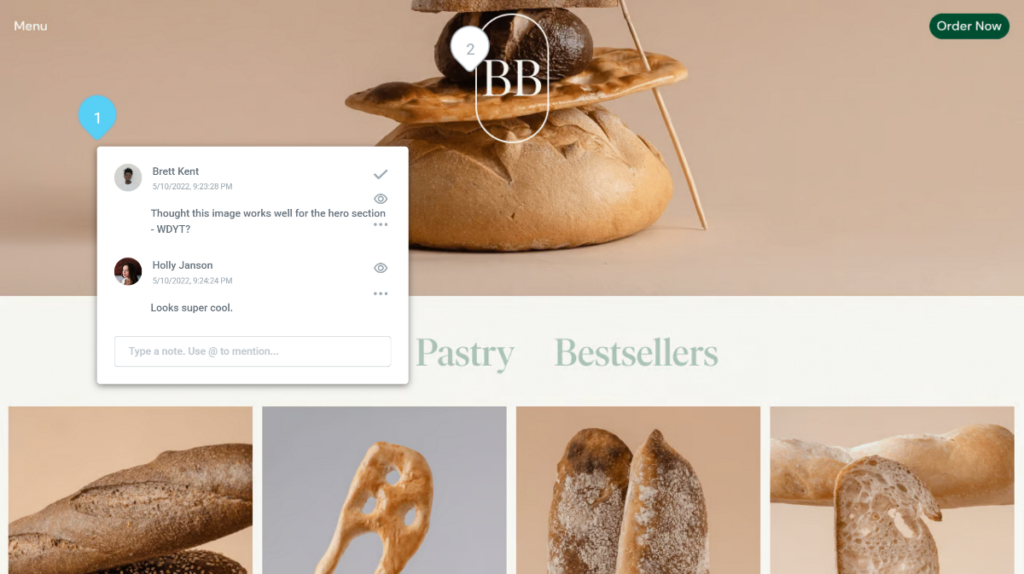
This direct annotation approach creates a visual communication system that keeps everyone on the same page. You’ll find that feedback becomes more precise and actionable when it’s tied directly to the elements being reviewed.
Divi’s Workflow Features
Divi focuses heavily on workflow optimization with several unique features designed to speed up your building process.
1. Multi-Select and Bulk Editing
When you need to adjust several modules, rows, or columns at once, Divi’s Multi-Select and Bulk Editing feature can be a real time-saver. This feature allows you to select several elements at once and then apply changes to common settings simultaneously.
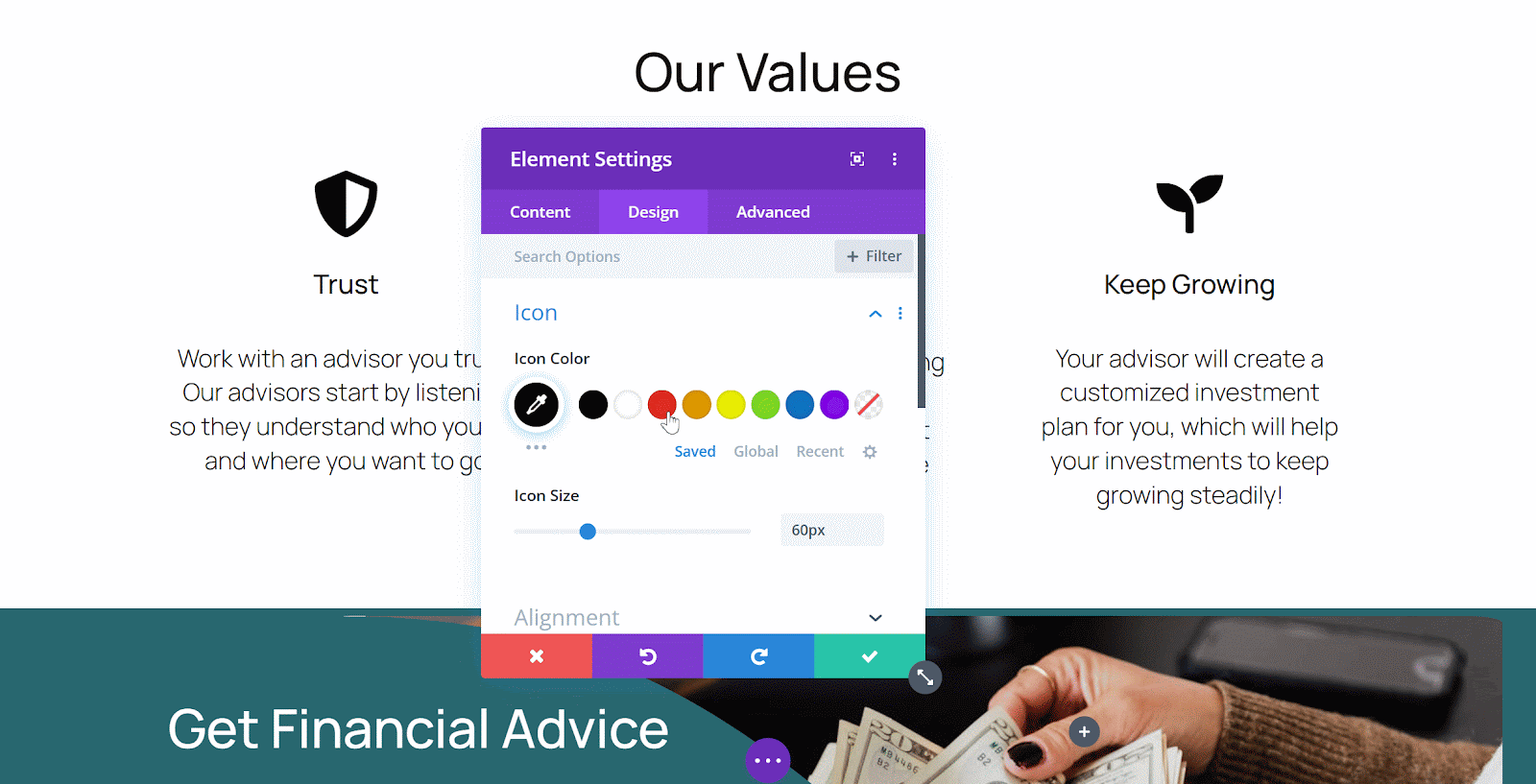
This eliminates the tedious process of editing elements individually, dramatically reducing the time needed to make consistent adjustments across different sections of your layout.
2. Wireframe Backend View
Divi also includes a unique Wireframe View that offers a unique perspective to your page structure. It displays a simplified, block-based outline of your layout and shows only the essential framework of sections, rows, columns, and modules without visual styling.

This view is incredibly useful for understanding your page organization, rearranging large sections, or locating specific modules without visual distractions.
3. User Role Permission
Divi includes two unique features that let you control who can access and manipulate the design inside the builder.
First is the Role Editor, which provides granular control over user access with its advanced permission system. Beyond standard user role management, you can enable or disable access to specific modules, settings, or even the entire builder based on WordPress user roles.
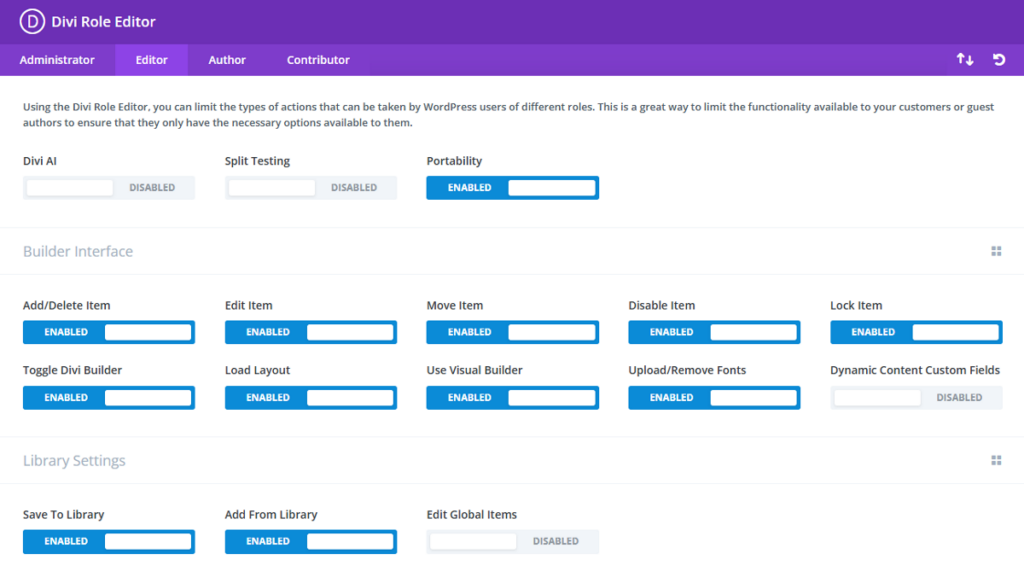
The second feature is the Lock feature, which adds another layer of control, allowing you to manually lock specific modules while maintaining edit access for other page elements. Users with administrator permission can simply right-click on any module and select the Lock option.
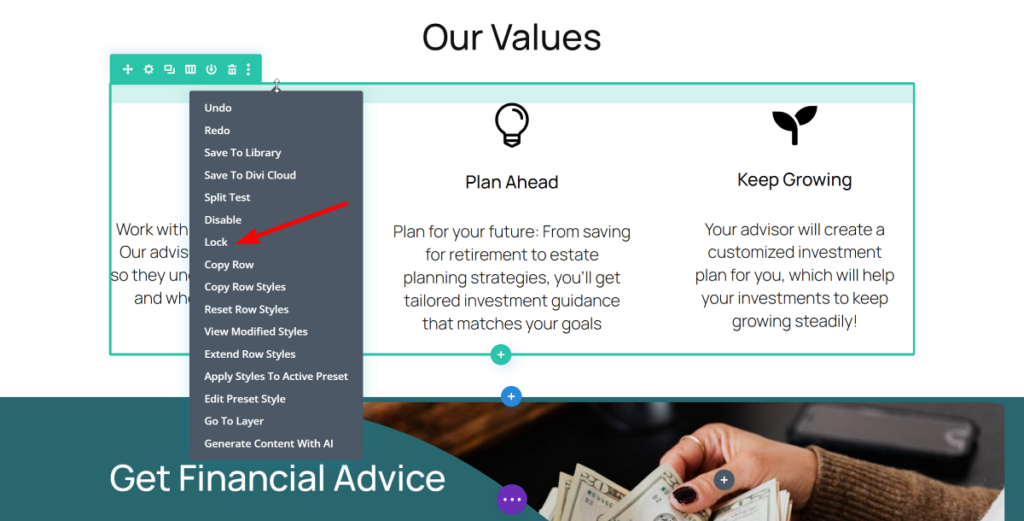
These features prevent unauthorized changes while maintaining collaborative access where needed.
4. Searchable Settings
Divi’s module settings panels are deep. Instead of scrolling through lengthy option lists, Divi comes with a built-in search functionality that lets you type keywords into the search bar.

This instantly filters the display to show only relevant settings, making it much faster to locate and adjust specific options.
Content Creation: Elementor vs Divi Unique Features
Beyond basic page design, both Elementor and Divi offer unique features that allow you to create dynamic and engaging content. Let’s explore how each builder provides unique features for content creation.
Elementor’s Content Creation Features
Elementor provides many powerful features to create dynamic content and add interactive elements without needing to install additional add-ons.
1. Loop Grid
The Loop Grid is another unique Elementor feature that lets you use custom designs to display dynamic content like blog posts, shop pages, and more. You can use the same editor to design a custom template for a single item using any available widget, and Elementor then applies the template to all items in your query.
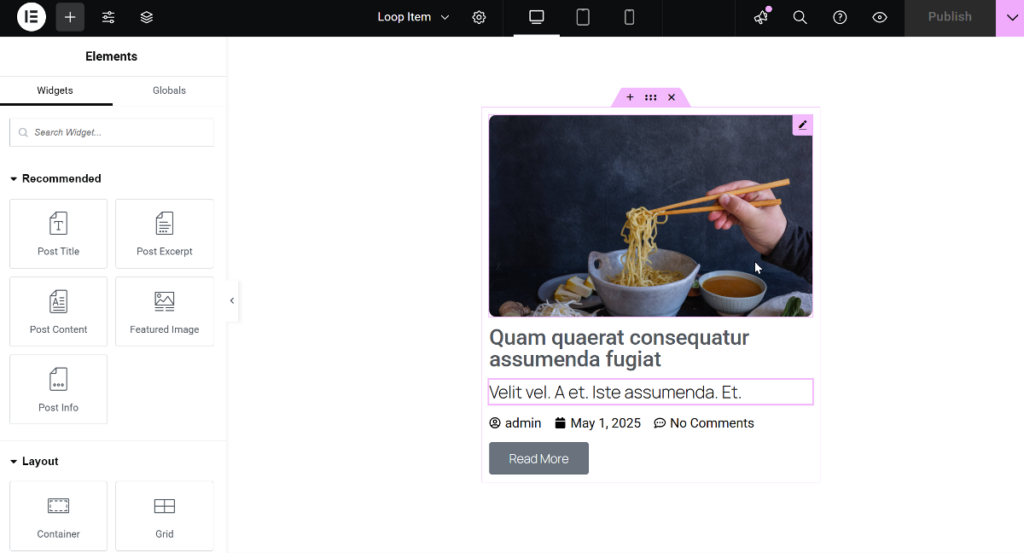
This flexibility allows you to create unique archive pages, custom product grids, or related content sections that perfectly match your brand design.
2. Popup Builder
Elementor also includes an integrated Popup Builder that allows you to create various popup types using the familiar editor interface and all available widgets.
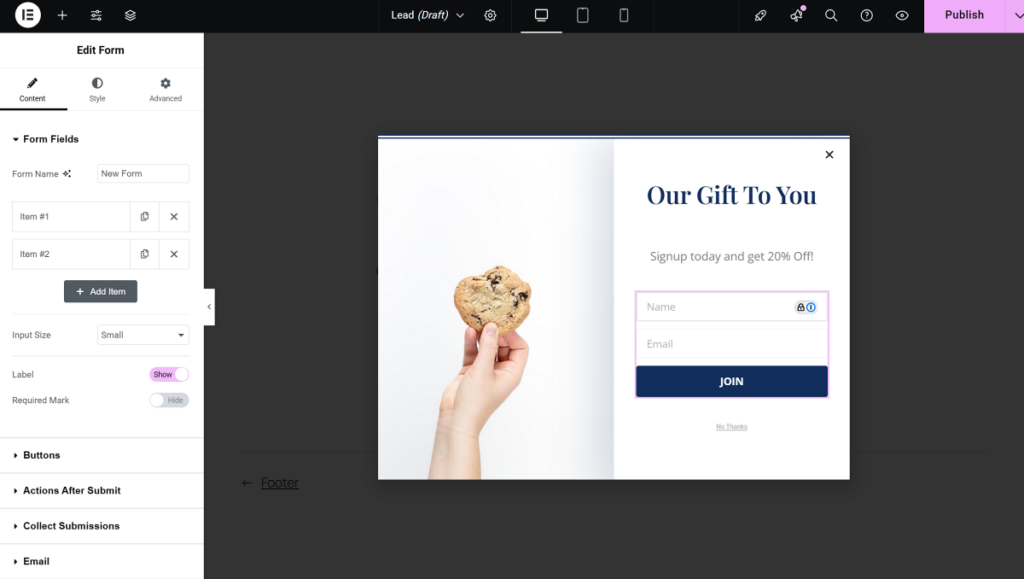
What sets it apart are the advanced popup trigger and targeting options. You can control exactly when, where, and to whom popups appear based on user behavior, specific pages, referral sources, and numerous other criteria.
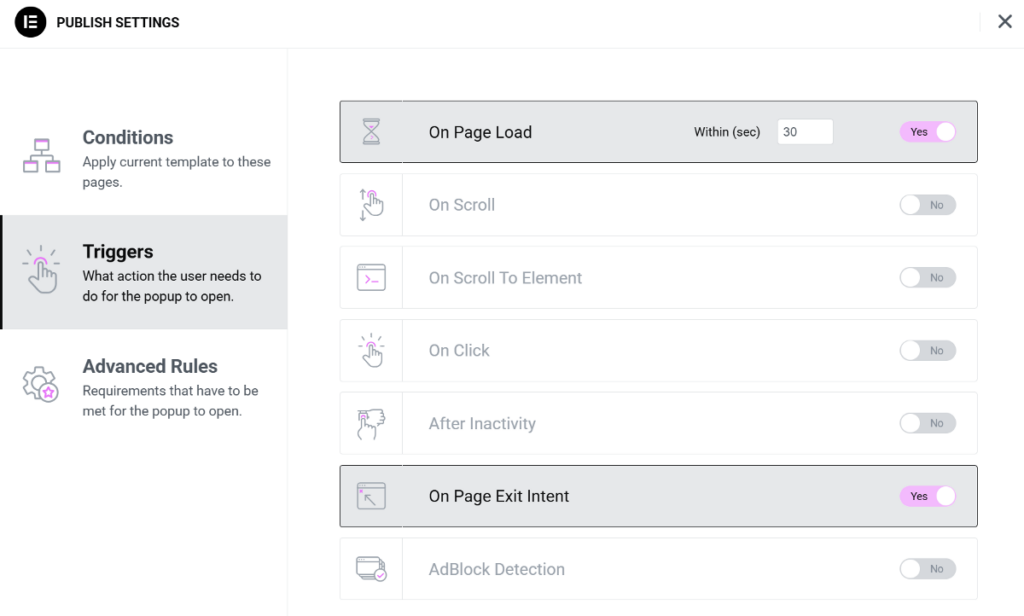
This level of control, combined with the familiar editing experience, makes Elementor popups a great built-in feature for marketers.
3. Floating Elements
Floating Elements is a unique feature that lets you display elements as users scroll through your content. This feature offers two main types:
- Floating Buttons: Perfect for contact information, calls-to-action, or quick access features.
- Floating Bars: Ideal for announcements, promotions, or persistent navigation.
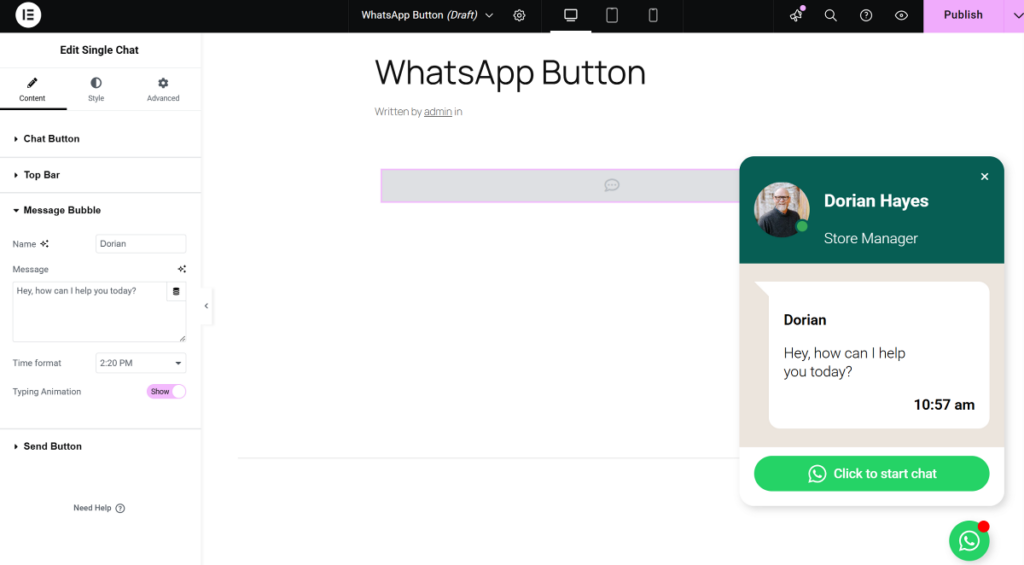
You can integrate these elements with various communication platforms and customize their appearance to match your brand. They also include advanced targeting options that let you display floating elements only to specific visitor segments based on their behavior or profile. Once you add these elements, you can track engagement and optimize performance over time using the built-in analytics dashboard.
4. Link In Bio
Beyond traditional web pages, Elementor also allows you to create mobile-optimized “Link in Bio” pages. These pages are perfect for social media profiles as they allow you to add multiple clickable buttons directing visitors to different destinations.
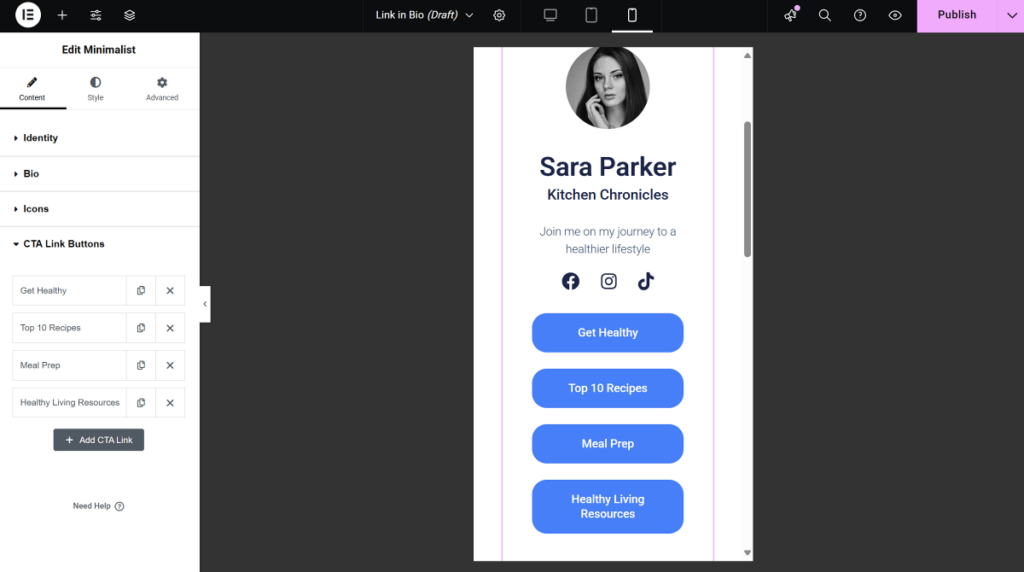
You get seven customizable layouts, each fully editable within the Elementor interface. You can also easily add your profile picture, a short description, and multiple action buttons to create an effective landing page for social media traffic.
Divi’s Content Creation Features
Divi also offers unique content creation features that enhance user experience and provide valuable insights into visitor behavior.
1. Advanced Contact Form
Divi’s Contact Form module includes a unique conditional logic feature that makes forms more intelligent and user-friendly. This allows you to configure the fields to appear or disappear based on previous user selections, creating a personalized form experience.
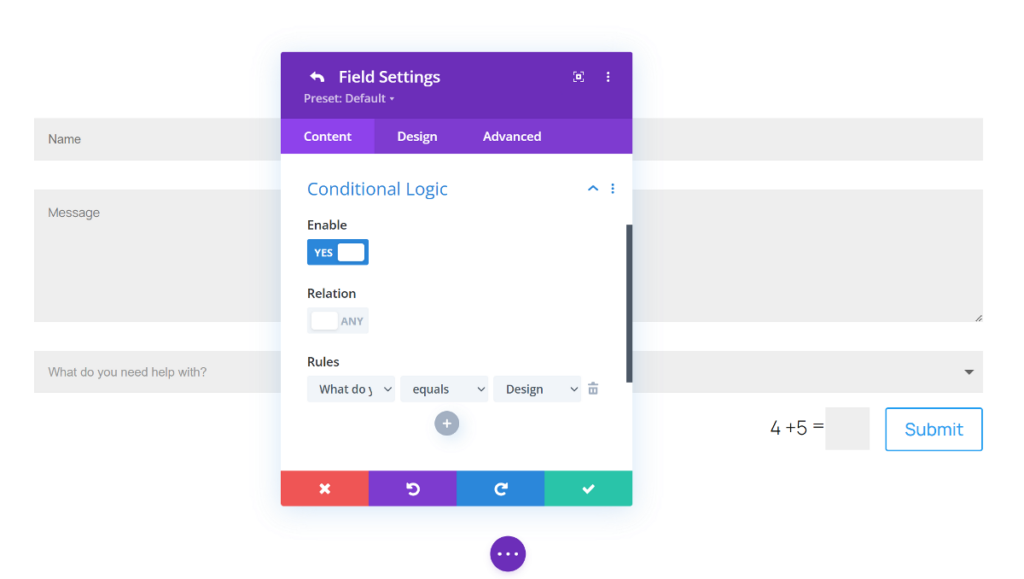
For example, when someone indicates they’re interested in a consultation, you could automatically show date and time fields, while hiding budget-related questions that might appear for project inquiries.
This creates cleaner, more focused forms that gather precisely the information you need while improving user experience.
2. A/B Testing (Split Testing)
Divi also includes Divi Leads, which provides an integrated A/B testing feature directly within the builder interface. This allows you to test different versions of headlines, buttons, calls-to-action, and other modules to determine which performs better.
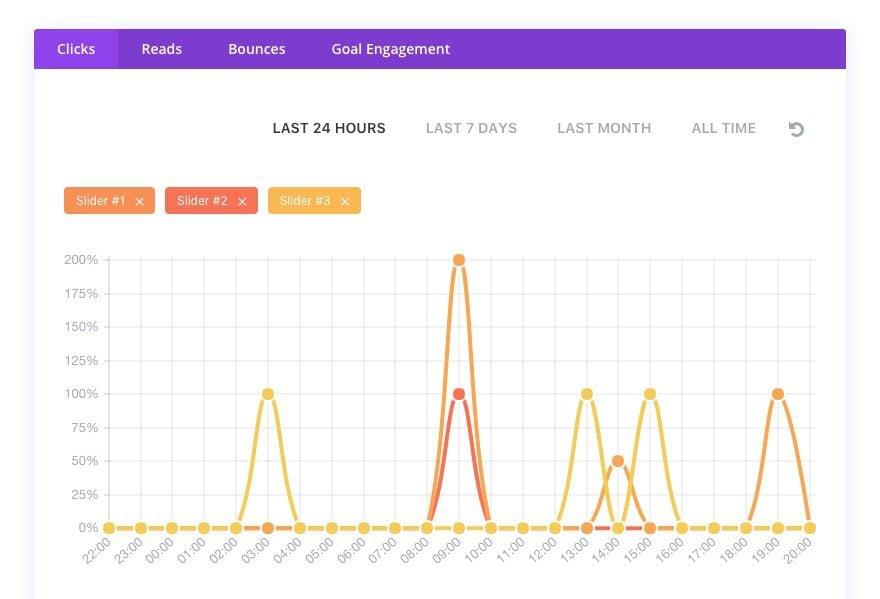
You can set specific goals like button clicks or form submissions, and Divi automatically shows different versions to your visitors while collecting detailed performance analytics. This data-driven approach helps you make informed decisions to improve your site’s effectiveness without needing external testing tools.
Summary: Which Page Builder Stands Out More
Both Elementor and Divi bring unique features to the table, each excelling in different areas.
Elementor stands out with features that extend functionality without requiring additional plugins. The built-in Popup Builder, Loop Grid, Floating Elements, Notes system, and Link in Bio creator enable you to build comprehensive, feature-rich websites with fewer external dependencies.
Divi excels in workflow optimization and building efficiency. Features like Wireframe View, Multi-Select and Bulk Editing, Find & Replace Styles, and Extend Styles focus on making the actual building process faster and more efficient.
Frequently Asked Questions
What are the benefits of using Elementor?
Elementor offers several key features that make it a popular choice for WordPress users. You’ll get access to a complete design toolkit that includes an intuitive drag-and-drop interface, an extensive widget library, and advanced design features like Theme Builder. The combination of powerful features and a user-friendly interface makes it an excellent choice for creating professional websites.
Is Elementor better than the Block editor?
Elementor excels when you need advanced design control, complex layouts with precise positioning, professional-grade animations, and team collaboration features. The block editor works well if you prefer WordPress’s native editing experience, focus primarily on content creation, or want faster loading times with minimal plugin dependencies.
Is Divi really worth it?
Divi includes two pricing options that allow you to use it on unlimited websites. If you’re a freelancer or an agency, Divi can provide good value through its comprehensive feature set and lifetime license option. You’ll also get access to hundreds of pre-made layouts and 24/7 support that can save you significant time on client projects.
What is the difference between Divi and Divi Builder?
When you purchase Divi, you get both the Divi Theme and the Divi Builder. The Divi Theme provides the foundation and overall framework for your website, while the Divi Builder serves as the drag-and-drop visual editor that powers your page creation process. You can think of them as two parts of the same system. The theme handles the technical structure, and the builder gives you the tools to design your content visually.

